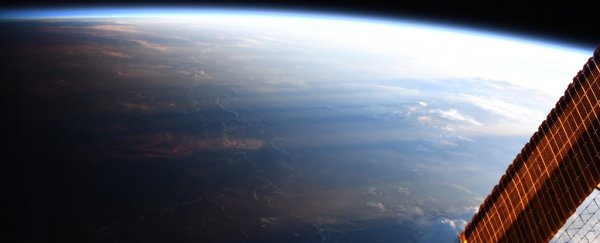A stunning image of Earth taken from the orbital perspective of the International Space Station (ISS) gives a unique glimpse of an everyday phenomenon too easily taken for granted.
In a photo posted to Twitter last week, NASA astronaut Christina H. Koch showed what it looks like from the ISS as darkness creeps over one half of Earth, while bright daylight continues to shine down upon the other side of the planet.
A couple times a year, the @Space_Station orbit happens to align over the day/night shadow line on Earth. We are continuously in sunlight, never passing into Earth’s shadow from the Sun, and the Earth below us is always in dawn or dusk. Beautiful time to cloud watch. #nofilter pic.twitter.com/BYDLv8RFVr
— Christina H Koch (@Astro_Christina) May 20, 2019
As it happens, this is a somewhat rare observation for the ISS, which usually doesn't orbit over the day/night transition point – which is called, eerily enough, the terminator (aka twilight zone).
"A couple times a year, the @Space_Station orbit happens to align over the day/night shadow line on Earth," Koch tweeted.
"We are continuously in sunlight, never passing into Earth's shadow from the Sun, and the Earth below us is always in dawn or dusk. Beautiful time to cloud watch."
Here's another vantage point of the phenomenon that NASA shared in April, as the ISS crossed the terminator above the Gulf of Guinea on Africa's mid-western coast:
 (NASA)
(NASA)
In a separate video last week, Koch also talked about what it feels like to look down on Earth from orbit – something other astronauts often describe having intense emotions and realisations about.
"Looking outside the window of the ISS is a humbling and inspiring experience," Koch said.
"It really brings into focus how important it is that we treasure this planet that we have."
Luckily for Koch, she'll have plenty of time to enjoy and reflect upon those amazing views. The engineer and physicist is expected to stay aboard the ISS for 11 months in total – establishing a new record for female astronauts.
